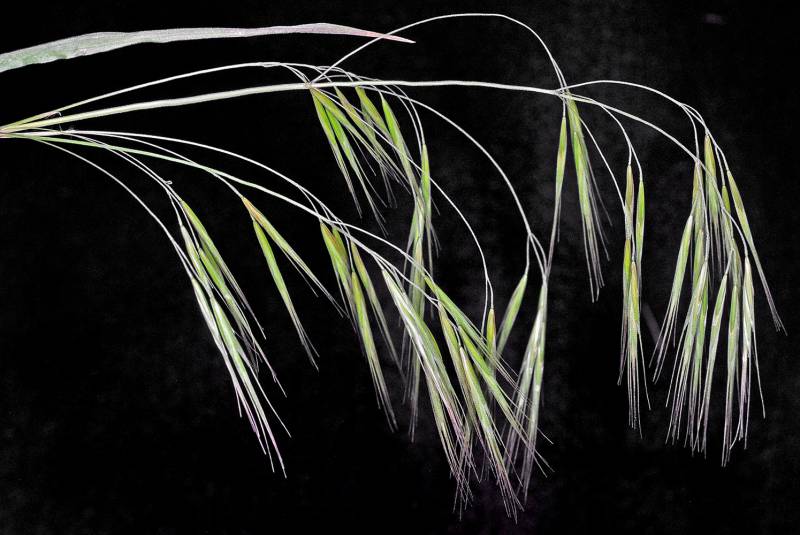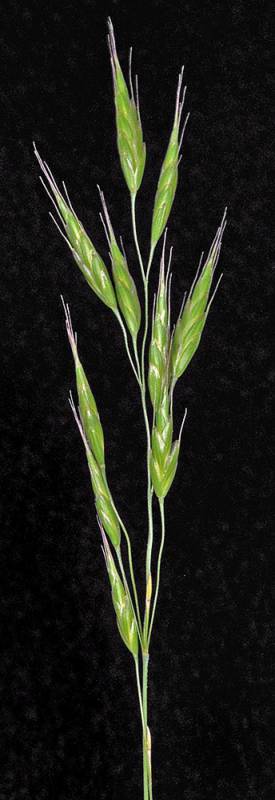Bromus tectorum
Bromus commutatus
cheat grass
meadow brome
Sheaths closed, covered with spreading, soft hairs;
ligules 0.5-1.5 mm. long;
blades flat, hairy, 2-5 mm. broad.
Inflorescence a loose panicle 7-15 cm. long, the branches ascending to spreading, the pedicles longer than the spikelets;
spikelets 5- to 9-flowered, oblong-lanceolate, flattened, 13-20 mm. long; first glume 5-7 mm. long, 3-nerved, the second slightly longer, 7-nerved;
lemmas 9-10 mm. long with awns 4-10 mm. long from a bifid apex;
paleas 1-2 mm. shorter.
Bromus tectorum
Bromus commutatus
Occurring on both sides of the Cascades crest in Washington; Alaska to Baja California, Mexico, east across North America to the Atlantic Coast.
Occurring on both sides of the Cascades crest in Washington; British Columbia to California, east across North America to the Atlantic Coast.
- Local floras:
BC,
CA,
OR,
WA
- Local Web sites:
CalFlora,
CalPhotos,
Flora NW,
PNW Herbaria
WildflowerSearch
iNaturalist (observations)
USDA Plants Database
- LBJ Wildflower Center
- SEINet
- Plants of the World Online
- Encyclopedia of Life
- Wikipedia
- Google Image Search
- Local floras:
BC,
CA,
OR,
WA
- Local Web sites:
CalFlora,
CalPhotos,
Flora NW,
PNW Herbaria
WildflowerSearch
iNaturalist (observations)
USDA Plants Database
- LBJ Wildflower Center
- SEINet
- Plants of the World Online
- Encyclopedia of Life
- Wikipedia
- Google Image Search



